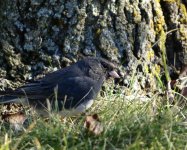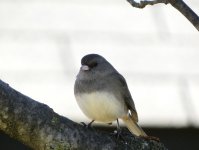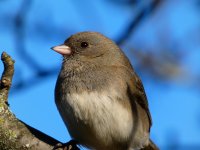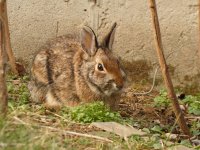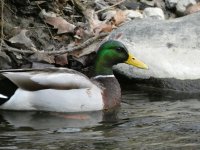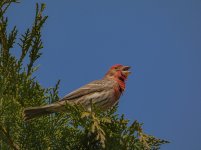Hello there, I recently bought the Panasonic Lumix FZ80 back in December and it is a fairly good camera (my first real one)
However, I have noticed that it does struggle in everything except bright sunlight. I‘m trying to figure out how to get the best quality out of this and I’m also looking for any advice. Thanks!
I have attached some sample photos of mine below.
I have a bridge camera/superzoom, a different one though.
With the small sensor these cameras aren't so good in average light but you can overcome that to an extent by making sure your background is bright and not aiming into the sky.
You could write all day long on what will make your pictures better, but I'd say the most important ones are as follows (in no particular order):
1) Effort. I know I'm stating the obvious here but I'll crack on anyway: the more time you spend trying to photograph birds the more things will land for you.
2) Being able to get reasonably close.
3) Learning to keep the camera steady.
4) Working out where birds feed/spend their time.
5) Judgement. When is the right time to move to get a bit closer and when is the right time to stay put.
6) Taking pictures lying down or sat down. You'll be amazed how close you can get to birds by sneaking up when lying down, even when you are out in the open and have no cover.
7) Catch them when there is a glint in their eye. That demands sun. That glint in their eye makes the world of difference to the picture. Personally, I don't want to take pictures of birds when their eyes look dull. I could have a 30 grand camera and everything else in the picture looks absolutely perfect, but without that glint it's just not the same. So, having a camera that doesn't perform in less than good light is not the end of the world.
8) Do your research., either through friends, contacts or the internet. Where are the birds you want to photograph?
9) Patience. After you've done your research, just go and lie down in a good spot for a couple of hours. You'll be amazed what turns up.
10) Relax. Don't treat it like having no decent pictures in a full day's trying is failure. That happens from time to time.
11) Background. It will make the world of difference to your picture. You'll soon get in the habit of just checking for a split second of what is in your background and move accordingly.
12) Willingness to learn. Most of the above are underpinned by whether or not you want to do better. What I mean by learn is what birds do in relation to your actions as opposed to the science of cameras.
The most overrated aspects?
1) The technical aspects of a camera. It's a creative pursuit as opposed to a science. Get carried away with fiddling around with the settings while you're trying to take pictures and the bird will more often than not have departed sharply. Work out your best settings in your own time, when you get to a place to photograph birds take a few practice shots of anything, and then just trust the camera and make sure you get into a good position. Personally I think it's much better to manoeuvre your position in relation to the sun than not move and mess around with your EV settings.
2) Shutter speed. 'Seems to be the holy grail. It is when taking pictures of birds in flight. For perched birds, it doesn't make a great deal of difference providing you keep the camera pretty steady.
That's a long answer but I suppose you asked! You'll be surprised how naturally these things come after diligently and repeatedly going through it.
Best of luck, mate!





